I can’t believe it is already October! Time to start thinking about Day of the Dead in Spanish class. It can be difficult to condense one important holiday into just a few lessons, so I narrowed it down to six main elements for my students. I chose to focus my Day of the Dead in Spanish lessons on pan de muerto, sugar skulls, cemeteries, papel picado, altars, and marigolds. While there are so many more important aspects of this day, these six really embody the celebration. Plus, since I only ever have a day or two to teach about Día de muertos, as I am sure you do too, we can’t always cover everything we want to!
I created a novice and intermediate Día de muertos digital project for bringing Day of the Dead to life in your classrooms! This project works really well for in-person or virtual learning as an interactive webquest, sub plans, or project! Students explore six aspects of Day of the Dead in Spanish in practical, engaging ways!
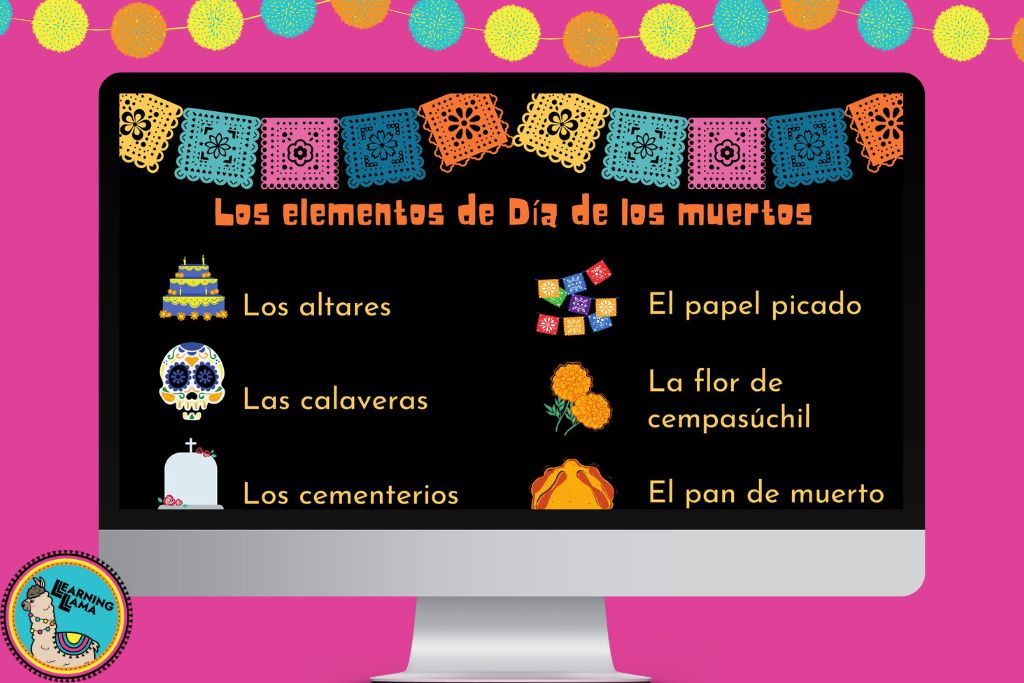
What are the Six Elements of Day of the Dead in Spanish?
With this Day of the Dead in Spanish download, students investigate 6 topics: pan de muerto, calaveras, cementerios, papel picado, altares, and cempasúchil. Within each topic, students interpret an authentic resource for their proficiency level: reading, video, images, etc. Each task is practical, authentic, and comprehensible! The project comes with novice and intermediate level tasks so all learners can enjoy this fun project. It also comes in English if you want to use it with the most beginner of Spanish students!
Learn more below about each of the six main elements of Day of the Dead in this project.
1. Pan de muerto
Pan de muerto is one of the most common foods eaten during Día de muertos. I remember going to Guatemala in November 2017 and eating at a restaurant with a bakery. The bakery had displays of pan de muerto that looked so delicious and had such intricate designs! When teaching any food unit , one of the most authentic tasks we can do is watch cooking videos or read recipes. So, have your students learn how to make pan de muerto in this same way! In this digital project, they will watch a video, identify ingredients, and make a list of the steps to make pan de muerto.
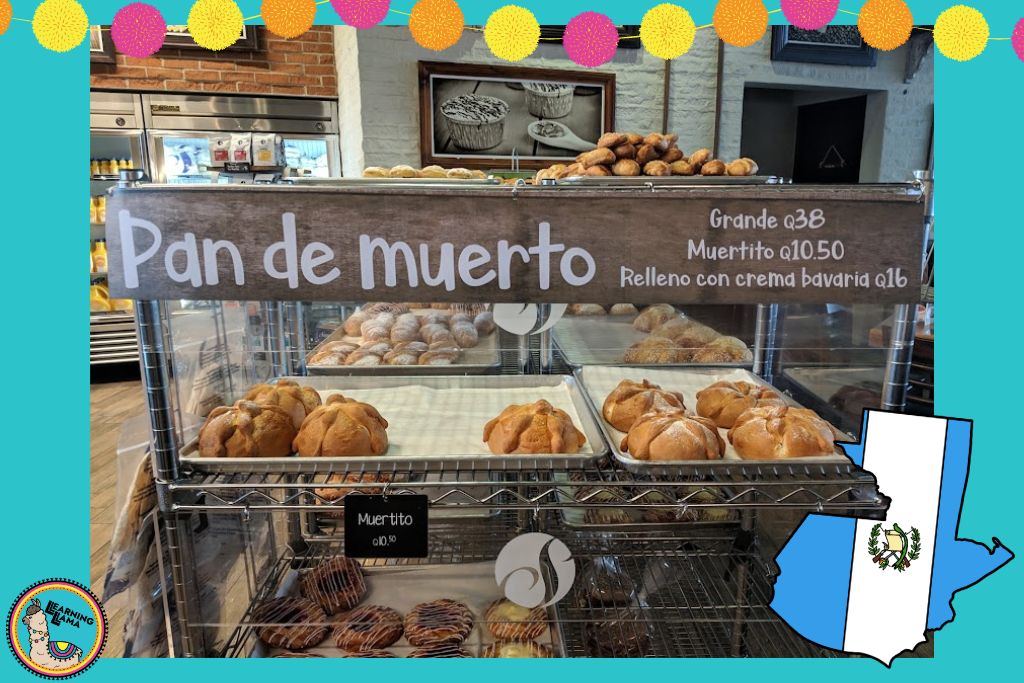
2. Las calaveras or sugar skulls
Calaveras are one of the most iconic symbols of Day of the Dead. They are synonymous with this holiday. Help your students learn what they mean and what they symbolize. In this project, students read and interpret a short text to learn about the meaning behind calaveras!
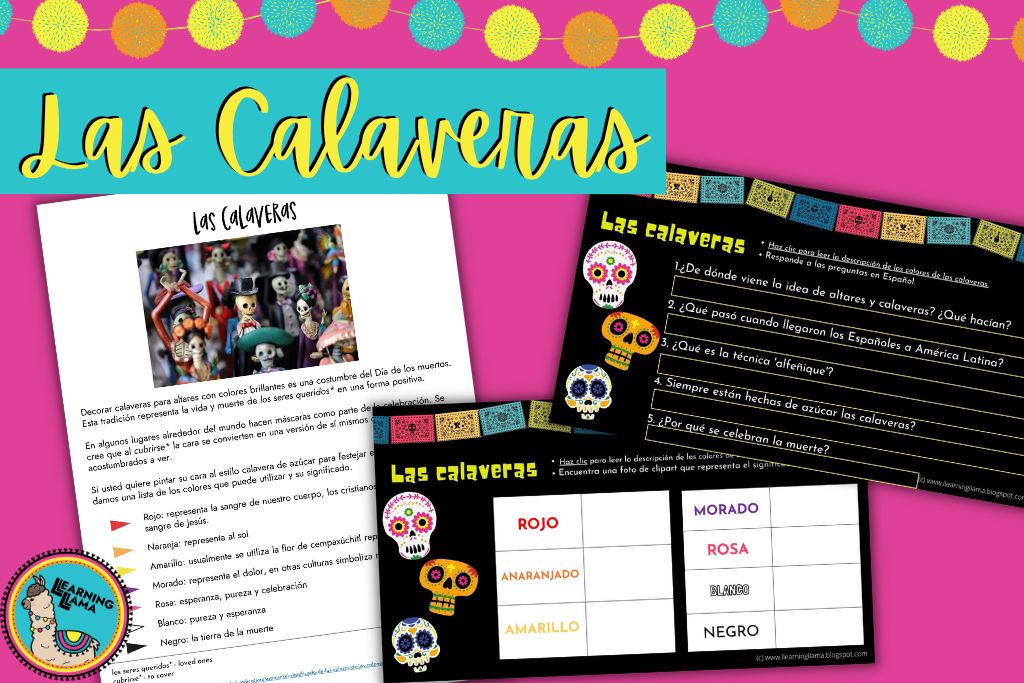
3. Cemeteries in Mexico
In the United States, we tend to think of cemeteries as being gray, bleak, and solemn. However, for Día de muertos in Mexico and other Latin American countries, cemeteries are quite the opposite. They are bright, colorful, and overall joyful as families spend time here remembering their loved ones. Again, on my trip to Guatemala, I was fortunate enough to visit a cemetery and I was shocked to see the tombs all painted bright colors like teal, purple, and yellow. Papel picado was draped over the tombs and flowers were everywhere!
Students will be shocked to see this stark contrast in tradition. Have your students reflect on the differences and make a cultural comparison. Look at images, find videos, and have them share their own experiences if they are comfortable.
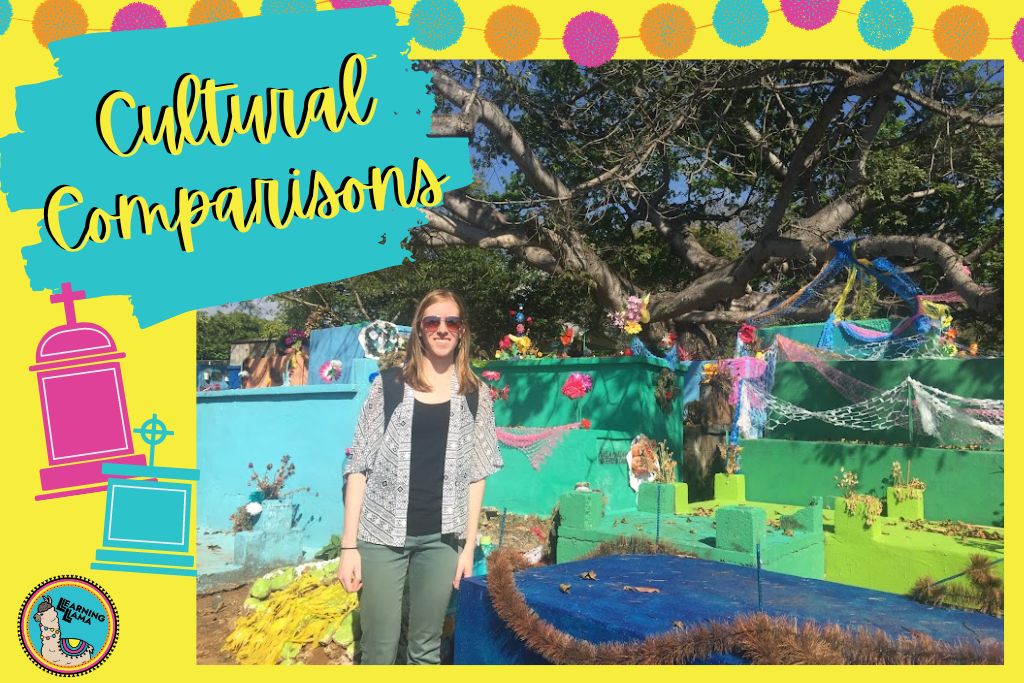
4. Papel picado
Just like calaveras, papel picado is another common decoration associated with Day of the Dead. In fact, it is commonly used in association with all Hispanic culture. I always had some hanging in my classroom. What better way to decorate your classroom than to have your students create some of their own papel picado and display it for you! With this digital lesson, students learn how to make their own. Just make sure you have lots of brightly colored paper, like this pack, for them to use!
In addition to making papel picado, you can challenge your students to make Day of the Dead origami. Here is a great book with step-by-step instructions. During the months of October and November, you can use this as a fast-finishers activity!
5. Altars and Ofrendas
Creating altars or ofrendas for the loved ones that have passed away is the central focus point of Day of the Dead celebrations. It may be hard to create physical altars in the classroom, so I had my students create a digital altar within this project. I first make sure they understand the common elements that are placed on the altars, so they create one that is authentic and realistic. Then, they add clipart or images on their virtual altar and write a description what items they placed there, along with an explanation as to why.
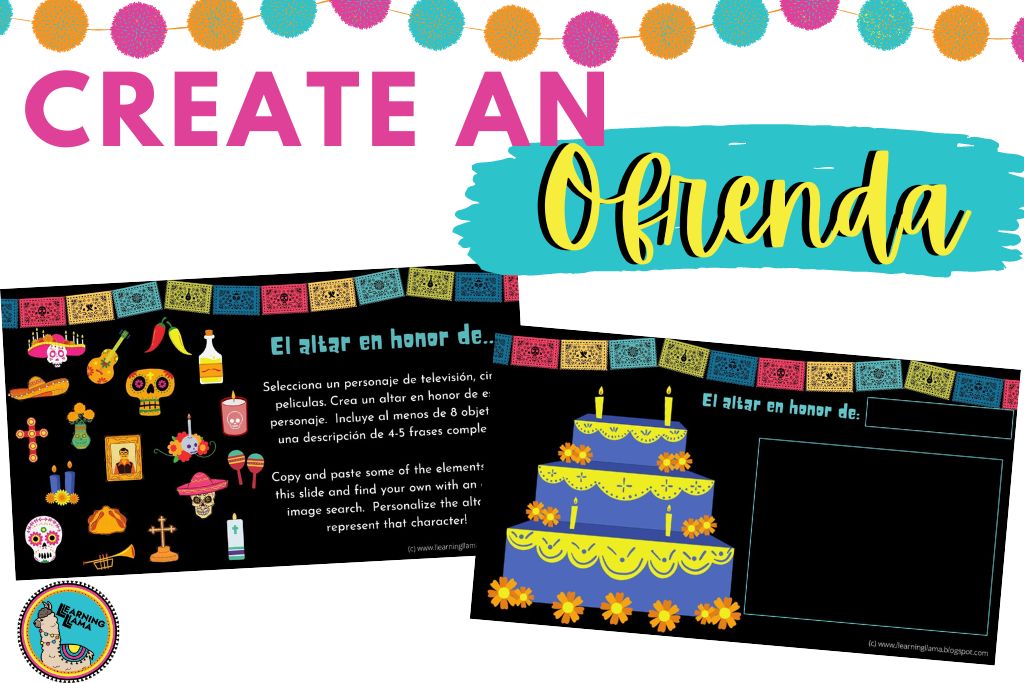
6. Marigolds or cempasúchil
Altars and cemeteries are adorned with marigolds or cempasúchil for Día de muertos. It is important for students to again understand the symbol behind these beautiful flowers. With this project, they will explore the history and meaning behind them. I did a similar project with poinsettias or flor de nochebuena at Christmas. Here are some activities including a virtual field trip to nurseries in Mexico, the legend of the poinsettia, and a reading about the history.
Ideas for Implementing the Project
You can purchase this product here in Spanish or English. Take a look at the preview video below to get a better idea of what the project includes.
Your students can complete this project easily on their own. It makes a great sub plan because each slide comes with detailed instructions. You can also use it as a fun project during a study of Day of the Dead. If you want to do a group project, each member can be responsible for 2 or 3 of the topics and then present to the other members in their group. Plus, this is a Google Slides download, so you can easily assign to your students on a learning management system.
For more Day of the Dead ideas, check out this blog post with activities for Day of the Dead vocabulary or here are 7 books you can purchase on Amazon to read with your students for Día de muertos.

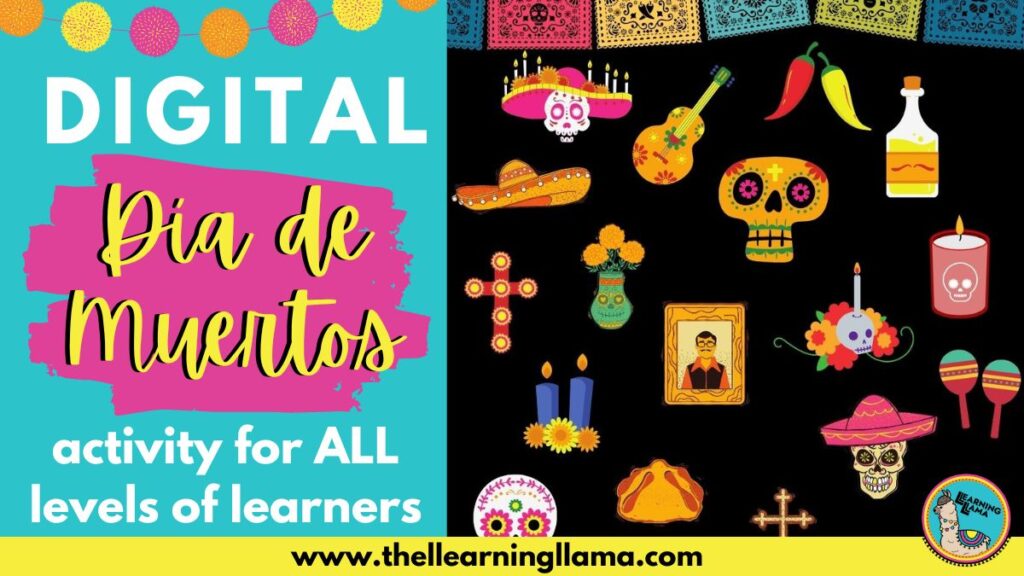




One Response